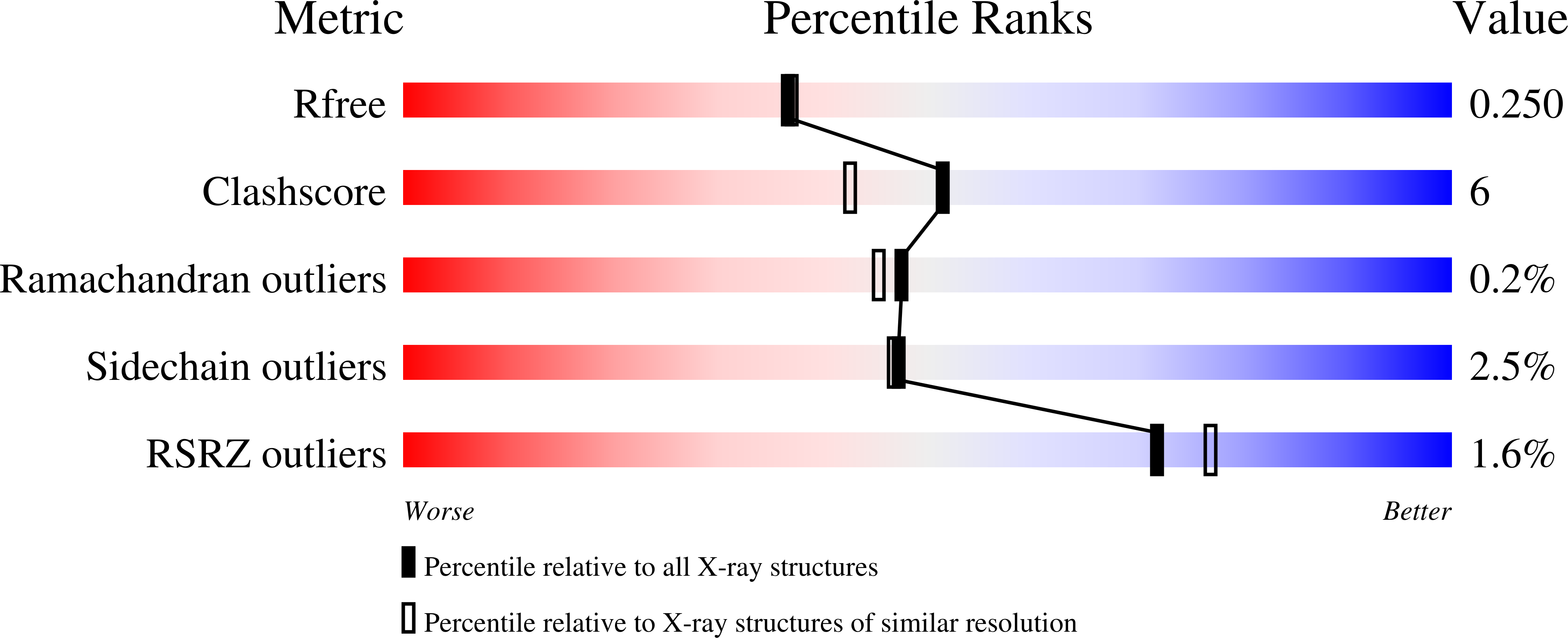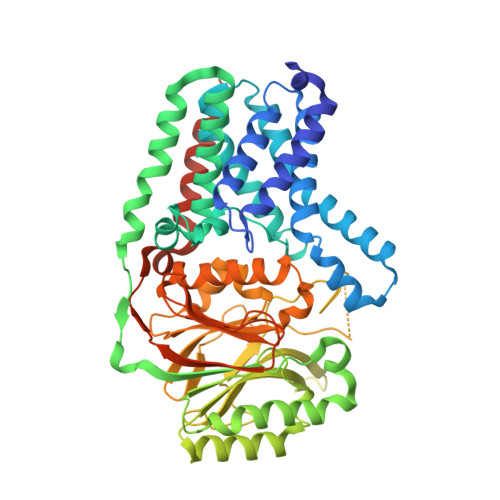Structural insights into lipoprotein N-acylation by Escherichia coli apolipoprotein N-acyltransferase.
Noland, C.L., Kattke, M.D., Diao, J., Gloor, S.L., Pantua, H., Reichelt, M., Katakam, A.K., Yan, D., Kang, J., Zilberleyb, I., Xu, M., Kapadia, S.B., Murray, J.M.(2017) Proc Natl Acad Sci U S A 114: E6044-E6053
- PubMed: 28698362
- DOI: https://doi.org/10.1073/pnas.1707813114
- Primary Citation of Related Structures:
5VRG, 5VRH - PubMed Abstract:
Gram-negative bacteria express a diverse array of lipoproteins that are essential for various aspects of cell growth and virulence, including nutrient uptake, signal transduction, adhesion, conjugation, sporulation, and outer membrane protein folding. Lipoprotein maturation requires the sequential activity of three enzymes that are embedded in the cytoplasmic membrane. First, phosphatidylglycerol:prolipoprotein diacylglyceryl transferase (Lgt) recognizes a conserved lipobox motif within the prolipoprotein signal sequence and catalyzes the addition of diacylglycerol to an invariant cysteine. The signal sequence is then cleaved by signal peptidase II (LspA) to give an N-terminal S-diacylglyceryl cysteine. Finally, apolipoprotein N -acyltransferase (Lnt) catalyzes the transfer of the sn -1-acyl chain of phosphatidylethanolamine to this N-terminal cysteine, generating a mature, triacylated lipoprotein. Although structural studies of Lgt and LspA have yielded significant mechanistic insights into this essential biosynthetic pathway, the structure of Lnt has remained elusive. Here, we present crystal structures of wild-type and an active-site mutant of Escherichia coli Lnt. The structures reveal a monomeric eight-transmembrane helix fold that supports a periplasmic carbon-nitrogen hydrolase domain containing a Cys-Glu-Lys catalytic triad. Two lipids are bound at the active site in the structures, and we propose a putative phosphate recognition site where a chloride ion is coordinated near the active site. Based on these structures and complementary cell-based, biochemical, and molecular dynamics approaches, we propose a mechanism for substrate engagement and catalysis by E. coli Lnt.
Organizational Affiliation:
Department of Structural Biology, Genentech, Inc., South San Francisco, CA 94080.



















